By now, with just one week to go before NFL teams start selecting players, you've probably read a million mock drafts. The vast majority of them were rendered totally moot by the Rams-Titans trade for the No. 1 pick, and then the others were laid to rest when the Eagles moved up to grab the No. 2 pick. If you're distressed thinking about how much time you wasted considering the possibilities based upon what the Titans would do with the first pick, well, you're not the only one.
Mock drafts are inherently difficult to put together because of the simple reality that there are always going to be trades impacting the first round. Last year was relatively quiet, but even then, with the first 14 teams in the opening round holding onto their picks, the bottom half of the round was impacted by a pair of draft-day trades. The 2014 draft saw five draft-day trades blow up the first round, including the massive Sammy Watkins deal, and that's without considering the impact of the Robert Griffin III trade and how it gave the Rams the second overall pick.
Trades are the reality, but mock drafts often leave them out because they're so impossible to predict. This mock is the exception. Here, I've gone through the first round and come up with a logical (or at least vaguely logical) trade for each of the 31 picks, with one notable exception right at the beginning. I won't say these trades will happen, but there's a universe in which they would make sense for the teams in question, given how certain players might fall or how the draft might play out. I've tried to emulate the trading and valuation styles of each organization; the Saints and Dolphins seem more likely to trade up, than, say, the Bengals or Ravens.
I'll notate each 2016 pick with its round and overall number; Cleveland's opening pick in the second round, as an example, is notated as 2-32. Picks in 2017 are written out to make it easier to discern that they're future picks. I evaluated all of the trades through both the traditional draft value chart and the empirically derived chart created by Chase Stuart. The Stuart chart is more accurate in terms of evaluating the actual value of picks, but because most teams still use the traditional chart (or some variant), it's better to use the values from the traditional charts in evaluating these deals. I valued 2017 picks as the middle pick in a given round, so a 2017 first-round pick would be treated as if it were equivalent to the 16th pick in a given round.
All set? Let's start with two untradable picks! The Rams and Eagles aren't exactly about to deal the top two picks away after trading a massive haul to acquire them, so let's find alternate trades for each of them before resuming service with the Chargers at No. 3.
 1. Rams send Nick Foles to the Cowboys for a conditional 2017 sixth-round pick.
1. Rams send Nick Foles to the Cowboys for a conditional 2017 sixth-round pick.
Foles is of little utility to the Rams, who paid their deposed starting quarterback a $6 million roster bonus earlier this offseason. They can save only $1.8 million by trading Foles, who has now become their third-string quarterback, but the value for them would come in recouping one of the many draft picks they sent away in their trade with Tennessee. The acquiring team would owe Foles only that $1.8 million for 2016, making him a low-cost, upper-echelon backup quarterback. That should interest a team like the Cowboys, who had their season destroyed by terrible backup quarterback play last year. Foles would be a massive upgrade on Kellen Moore behind the oft-injured Tony Romo.
 2. Eagles trade Sam Bradford to the Jets for 2-51.
2. Eagles trade Sam Bradford to the Jets for 2-51.
I wrote on Thursday about why the Eagles should deal Bradford. He has played his part, with reports suggesting that he'll ask the Eagles to be traded in lieu of serving as a lame-duck starter this season. Philly could badly use the extra pick that would come with a Bradford trade and could install Chase Daniel as the starter until Carson Wentz is ready to take over.
The Jets would have to pay only Bradford's $7 million base salary this season, crucial for a team that is $1.4 million over the cap after you account for the money needed to sign their draft picks. (They would likely have to cut Breno Giacomini and/or do something with Muhammad Wilkerson's $15.7 million cap hold to clear out space.) Bradford would likely be an upgrade on the Ryan Fitzpatricks and Brian Hoyers of the world, even if they played better than the former first overall pick last year; Bradford also would be a solid fit in Chan Gailey's spread attack.
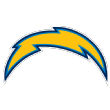 3. Chargers trade 1-3 to the Jaguars for 1-5, 3-69, and a 2017 third-round pick.
3. Chargers trade 1-3 to the Jaguars for 1-5, 3-69, and a 2017 third-round pick.
The Jaguars desperately need help in their secondary in what could be a make-or-break year for their front office and coaching staff, and while Dave Caldwell added Tashaun Gipson and Prince Amukamara in free agency this offseason, it's hard to pass up a possibility to keep Florida State product Jalen Ramsey in state. The Jags would likely have to trade ahead of the Cowboys to ensure that they end up with the star defensive back, but Ramsey could potentially be a franchise-level defender at either cornerback or safety. With teams paying more for cornerbacks than ever before, the value of a player like Ramsey on a rookie deal could be enormous.
San Diego doesn't really have a need for Ramsey, but they could move down two picks here and still probably come away with the most logical fit at the top of the draft for their roster, Ole Miss tackle Laremy Tunsil, given that the Cowboys have no need for another offensive lineman. Dallas could trade the pick, but the Chargers could add two third-round picks if they're willing to take a risk on grabbing Tunsil two picks later.
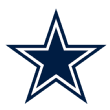 4. Cowboys trade 1-4, 6-189 to Titans for 1-15, 2-33, 3-76.
4. Cowboys trade 1-4, 6-189 to Titans for 1-15, 2-33, 3-76.
Some reports have suggested that the Chargers don't feel like Tunsil is a particularly good fit for their roster and have, perhaps, more faith in the combination of King Dunlap and Joe Barksdale than should be warranted. If they draft Ramsey and play him at safety, the Cowboys could then be at the head of the market for Tunsil, a player they really don't need whatsoever. The Titans were considering Tunsil with the first overall pick; here, they could give up second- and third-round picks and still manage to come away with the pass protector they coveted.
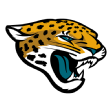 5. Jaguars trade 1-5, Luke Joeckel to Bears for 1-11, 2-41, 4-104.
5. Jaguars trade 1-5, Luke Joeckel to Bears for 1-11, 2-41, 4-104.
The Bears are another team that could at least theoretically have an interest in trading up for Tunsil, given that their left tackle is currently 2014 seventh-rounder Charles Leno, but this is a deal where the Bears get to trade up and come away with a veteran left tackle, too. Joeckel has failed to develop in Jacksonville, but he was worth the No. 2 pick three years ago; the Bears would basically get a season-long flier on Joeckel (or a two-season flier if his fifth-year option is picked up) and the chance to upgrade elsewhere by adding somebody like Ramsey or Ohio State defensive end Joey Bosa.
The Jags, who don't need a tackle, would make this deal to come away with precious extra picks, as their spending spree over the past several free-agent periods has prevented them from acquiring valuable compensatory selections. This deal would value Joeckel as roughly being worth a late third-rounder by the traditional trade value chart.
 6. Ravens trade 1-6 to the Colts for 1-18, 2-48, 2017 third-round pick.
6. Ravens trade 1-6 to the Colts for 1-18, 2-48, 2017 third-round pick.
Having struck out with subpar decisions in free agency on an annual basis, Indy mostly stayed quiet this offseason. Colts general manager Ryan Grigson may have been rightfully reticent to spend, but his team still has holes. Chief among them is a pass rush that ranked 28th in adjusted sack rate last season. With Trent Cole and Robert Mathis possessing a combined age of 68, Indy needs to inject youth into its pass rush. If Bosa is on the table at No. 6, the Colts might justify trading up to grab a player with his two-way effectiveness as an edge rusher and defender.
Baltimore's pass rush isn't much younger -- Elvis Dumervil and Terrell Suggs are a combined 65 years old -- but Ozzie Newsome's nature has been to acquire as many picks as possible and trust that he'll stumble upon talent with those extra selections. The Ravens actually would get only 94 cents on the dollar by virtue of the old trade value chart when they make this deal, but under the more quantitatively based Stuart chart, Baltimore would come away with nearly $1.42 on the dollar.
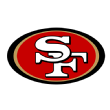 7. 49ers trade 1-7, 5-142 to the Dolphins for 1-13, 2-42
7. 49ers trade 1-7, 5-142 to the Dolphins for 1-13, 2-42
After striking out on retaining Lamar Miller and adding C.J. Anderson, the Dolphins are still in the market for a running back. The Eagles were popularly linked to Ohio State's Ezekiel Elliott at eight, and while the Browns are unlikely to draft a running back this high after living through the Trent Richardson fiasco, that's the exact sort of spot where somebody would trade up to grab Elliott. Stephen Ross and Mike Tannenbaum, meanwhile, both aren't the sort of managers to pass up the opportunity to acquire a star. Trent Baalke is perennially looking to trade down in the draft, and he can get a valuable second-rounder here by moving down six picks in the first round.
It wouldn't be a great idea. I wrote last week about Elliott and how players who fit that criteria often fail to live up to expectations. I have no reason why Elliott shouldn't be a fine running back, but we're just not great at judging running backs coming into the league, as Richardson can remind you.
 8. Browns trade 1-8 to Titans for 2-45, 2017 first-round pick
8. Browns trade 1-8 to Titans for 2-45, 2017 first-round pick
ESPN's Brian Burke noted on Twitter Thursday that future draft picks tend to be among the most undervalued assets in football. I agree. There was a point in the past when somebody arbitrarily decided that picks devalue by one round as you look one year into the future, meaning that a 2017 first-round pick would have the present-day value of a second-round pick if you made a trade for one next week.
That's just not accurate. The devaluation over time just isn't that intense, especially for an organization like Cleveland, which is years away from competing and (famous last words) not likely to fire their front office after one bad year in 2016. Here, the Titans are thinking that they can deal their first-round pick next year, knowing that they have another first-rounder waiting in the wings from Los Angeles. And the Browns are making a calculated bet that they'll see a juicier return on this pick next year. By the traditional chart, they would win this swap if Tennessee's 2017 first-rounder fell in the top half of the draft next year. The chances of that happening are pretty high.
 9. Buccaneers trade 1-9 to Ravens, Mike Glennon to Broncos Broncos trade 2-63 to Ravens; Ravens trade 1-6 to Buccaneers
9. Buccaneers trade 1-9 to Ravens, Mike Glennon to Broncos Broncos trade 2-63 to Ravens; Ravens trade 1-6 to Buccaneers
I could make this whole thing out of elaborate three-way trades. These are three small trades that make sense for the respective teams in question. Baltimore moves down three spots and gets the last pick in the second round for doing so, which is basically a match on the traditional trade value chart. Denver sends a second-round pick for a quarterback option with some upside in Glennon, who has been close to a league-average quarterback in 619 attempts with Tampa. And the Bucs deal away their backup quarterback to move up three spots and grab somebody like Bosa, who would represent a massive upgrade on their dismal options at defensive end. Everybody wins!
 10. Giants trade 1-10, 3-71, 2017 third-round pick to the Jaguars for 1-5.
10. Giants trade 1-10, 3-71, 2017 third-round pick to the Jaguars for 1-5.
After drafting Ereck Flowers in the first round last year, you could make the case that the Giants shouldn't be looking at tackles in the first round of this year's draft. Then, after you look at the depth chart and remember that Marshall Newhouse and John Jerry are currently the right side of the New York offensive line, you'll realize why the Giants are very much still in the market for offensive linemen. I don't think they could credibly justify trading up for anybody besides Tunsil, who would slot in at left tackle while moving Flowers to the right side.
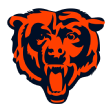 11. Bears trade 5-150 to the Ravens for Eugene Monroe.
11. Bears trade 5-150 to the Ravens for Eugene Monroe.
Let's cut away from the 11th pick and get the Bears their left tackle. If Baltimore drafts Tunsil or Notre Dame's Ronnie Stanley sixth, Monroe will be a useless appendage. The Ravens would be selling low on a player who was part of one of the league's better lines when healthy in 2014, but that might appeal to the Bears, who are stuck with the aforementioned Leno at left tackle. The Ravens would get some breathing room against the cap for their annual post-June 1 signings, while the Bears would take a low-cost flier on a possible starting left tackle.
 12. Saints trade 1-12, 2-47 to Ravens for 1-6, 6-182.
12. Saints trade 1-12, 2-47 to Ravens for 1-6, 6-182.
The Saints don't really operate in the rational world when it comes to player valuation; they mostly fall in love with pieces and carve up their cap to get them, often with disastrous results. They are deficient at weakside linebacker with Dannell Ellerbe currently slotted in, and there's an obvious upgrade lurking with UCLA star Myles Jack. Jack is incredibly talented, but linebackers who don't rush the quarterback aren't treated as particularly valuable by the league; remember that Luke Kuechly, for one, fell to ninth in the 2012 draft. The Saints could very well end up getting Jack at No. 12. Here, they trade up to No. 6 to do so, with the Ravens unsurprisingly happy to oblige. This is basically an even trade (1630 to 1618.6) per the traditional trade chart, but the Ravens would get $1.17 on the dollar under the Stuart chart.
 13. Dolphins trade 1-13 to Chiefs for 1-28, 5-162, Jamaal Charles.
13. Dolphins trade 1-13 to Chiefs for 1-28, 5-162, Jamaal Charles.
If Miami doesn't trade up for Elliott, this is another way to grab a running back. Tannenbaum is no stranger to using picks to acquire talented veteran players, having done so several times with the Jets. Charles is on a relatively team-friendly contract, with two years and $12.3 million in non-guaranteed money left on his deal, which would be critical given Miami's cap situation. The Chiefs got by just fine with Charcandrick West and Spencer Ware as their running back combination last year, both of whom were recently signed to extensions. By dealing Charles, they could move up to grab a starter at wide receiver (Laquon Treadwell?) or cornerback (Vernon Hargreaves III?).
 14. Raiders trade 1-14 to Texans for 1-22, 3-85, 4-119.
14. Raiders trade 1-14 to Texans for 1-22, 3-85, 4-119.
Houston is likely in the market for a wide receiver across from superstar DeAndre Hopkins, but it won't be Treadwell, who has drawn comps to Hopkins for their similar skill sets. A more likely candidate for the Texans would be TCU's Josh Doctson, who might be on the board at No. 22, but I doubt that Houston wants to take that risk if they're seriously interested in the agile wideout. The Texans have fundamentally reshaped their offense by adding Brock Osweiler, Lamar Miller and Jeff Allen this offseason; they could complete the package by adding the gifted Doctson as a threat after the catch.
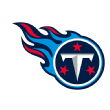 15. Titans trade 1-15, 2-43 to the Ravens for 1-6.
15. Titans trade 1-15, 2-43 to the Ravens for 1-6.
One other logical place Tennessee might try to upgrade is along the defensive line, where they have the brilliant Jurrell Casey and a lot of guys who don't distract you from Casey's brilliance. One logical target for them is Oregon defensive end DeForest Buckner, who might not make it past the Browns at No. 8. They'd have to trade up past the 49ers and Browns -- each of whom would have an obvious interest in the athletic Oregon product -- to have a realistic shot at nabbing him.
 16. Lions trade 1-16, 2-46 to Browns for 1-8, 5-141.
16. Lions trade 1-16, 2-46 to Browns for 1-8, 5-141.
Another team in the running for an offensive tackle would be the Lions, who have had issues on the right side for years and gotten by with Riley Reiff at left tackle. By moving up, they could go after Stanley or hometown product Jack Conklin, who was born and raised in Michigan before playing at Michigan State. This is another deal that is basically identical on the traditional trade value chart (1440 for 1435.5), and even by the Stuart chart, the Lions are giving up only $1.11 on the dollar to move up. That's about as even as a draft-day trade is going to get.
 17. Falcons trade 1-17, 2017 sixth-round pick to Jets for 1-20, 3-83.
17. Falcons trade 1-17, 2017 sixth-round pick to Jets for 1-20, 3-83.
If the Jets want one of the second-tier quarterbacks in this year's draft class -- among them Paxton Lynch and Christian Hackenberg -- they'll have to deal with the landmine standing in front of them at No. 19. The Bills pick one selection before the Jets at 20, and it would hardly be out of the question for them to draft the passer the Jets want. If they want Lynch, they'll need to move ahead of the Bills to do so. Here, they move up three picks by sending a third-rounder to the Falcons, who would probably rather wait a year to send a late-round pick as part of the return, given that they're down a fifth-rounder in 2016 after piping crowd noise into the Georgia Dome.
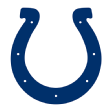 18. Colts trade 1-18, 5-155 to the Jets for Muhammad Wilkerson, 4-118.
18. Colts trade 1-18, 5-155 to the Jets for Muhammad Wilkerson, 4-118.
Yeah, there are a lot of Jets trades around this spot. The Colts are perennially in need of difference-makers on defense, and Wilkerson would slot in perfectly as a 5-technique end for Chuck Pagano. Indy can afford to give Wilkerson the contract extension he deserves, which the Jets may not be able to wrangle under their current cap predicament. The Jets would then have two first-round picks (Nos. 18 and 20) to work with, which they could use to draft Lynch at No. 18 while finding a replacement for Wilkerson up front in their defensive line rotation at No. 20, like Sheldon Rankins.
 19. Bills trade 1-19 to the Packers for 1-27, 3-88, 6-200.
19. Bills trade 1-19 to the Packers for 1-27, 3-88, 6-200.
As tempting as it might be to try to trade up, the Bills are still feeling the effects of the Sammy Watkins trade and need as many picks as possible. It would behoove them to trade down and acquire an extra pick or two. The Packers don't often trade up under Ted Thompson, but it does happen, with Thompson having traded up to grab Jerel Worthy and Casey Hayward in 2012 and Brett Hundley a year ago. Here, they could be moving up for help at outside linebacker if they're going to keep Clay Matthews inside, with an Anthony Barr-esque athletic freak like Darron Lee one viable option.
 20. Jets trade 1-20, Muhammad Wilkerson to 49ers for 1-7, Colin Kaepernick.
20. Jets trade 1-20, Muhammad Wilkerson to 49ers for 1-7, Colin Kaepernick.
This is the last Jets trade in this mock, so give them a round of applause as they leave. This seems too simple. The Jets need a quarterback and have a defensive lineman they can't afford. The 49ers have a quarterback who doesn't want to play for them and need just about everything. Wilkerson is one of the few human beings alive who seems to actually want to play for the 49ers. This deal pegs the difference in value between Wilkerson and Kaepernick as 650 points on the traditional trade value chart, roughly between the 28th and 29th pick of the first round. Everyone wins here!
 21. Washington trades 1-21, 5-158 to Titans for 2-43, 2-45.
21. Washington trades 1-21, 5-158 to Titans for 2-43, 2-45.
Washington general manager Scot McCloughan likes to build his team through the draft and by taking linemen, and this is a draft so deep in defensive linemen that it might be better to trade back a bit and grab two above-average contributors in the second round. If Washington signs Josh Norman, it will be even more important for them to find cheap talent on cost-controlled contracts through the draft. The Titans could use help up front, but they're also in the market for a cornerback with the possibility of moving Jason McCourty to safety, and if one of the more prominent corners in the first round slip, Tennessee could pounce for Hargreaves or William Jackson III here.
 22. Texans trade 1-22 to Panthers for 1-30, 3-93, 5-168.
22. Texans trade 1-22 to Panthers for 1-30, 3-93, 5-168.
Although his team has been struggling with cap woes for most of his tenure with Carolina, Panthers general manager Dave Gettleman has no qualms about trading up, having done so to acquire Devin Funchess last year. It seems like a bad idea given how thin Carolina's roster can be, but after three division titles in three years, Gettleman probably deserves some benefit of the doubt. Carolina was able to make it through the NFC with Michael Oher at left tackle, but Oher and Mike Remmers were badly exposed in the Super Bowl. They could very well trade up to try to grab a tackle such as Germain Ifedi in the middle of the first round here, or go after one of the aforementioned corners if they're still on the board. This is another basically identical swap (780 for 772.2) on the traditional value chart.
 23. Vikings trade 1-23, 2-54 to the Raiders for 1-14, 4-114.
23. Vikings trade 1-23, 2-54 to the Raiders for 1-14, 4-114.
The last time the Vikings traded multiple picks to grab a wide receiver in the first round, they sent four picks to the Patriots for Cordarrelle Patterson. Two of those picks turned into Jamie Collins and Logan Ryan. Not ideal. Vikings general manager Rick Spielman is one of the league's sharper talent evaluators, but I'm going to be selfish: I want to see Teddy Bridgewater throw to Doctson, who may very well end up as one of the best receivers after the catch in all of football once he adjusts to the speed of the NFL. I also love the idea of Doctson starting alongside Stefon Diggs and Kyle Rudolph, but that's really only because we can call them the DDR and shoot a Costacos Brothers poster of them making an arcade dancing floor explode. Let me have this one.
 24. Bengals trade 1-24 to the 49ers for 2-37, 3-68.
24. Bengals trade 1-24 to the 49ers for 2-37, 3-68.
Cincinnati never trades up, so let's not start a new trend here. It's probably too early for the 49ers to draft Lynch at No. 7, but it also seems exceedingly unlikely that he'll still be on the board when the 49ers draft again at No. 37. That seems to create a pretty obvious scenario in which they could trade up into the bottom half of the first round and grab Lynch before the Cardinals at 29 or one of the many other teams that might trade up with the likes of Seattle or Green Bay.
 25. Steelers trade 1-25, 2017 first-round pick to the Browns for 1-8, 2017 third-round pick.
25. Steelers trade 1-25, 2017 first-round pick to the Browns for 1-8, 2017 third-round pick.
Pittsburgh is already down two picks in this year's draft after trading away fifth- and sixth-round picks for Brandon Boykin and Josh Scobee, who offered little in a Steelers uniform. They can't really afford to trade away any other picks in this year's draft, but they're desperately in need of a left tackle after losing Kelvin Beachum. Let's get them Stanley at No. 8 by making a deal with the Browns, who will happily pick up another first-round pick in 2017 for their troubles.
 26. Seahawks trade 1-26, 3-90 to the Browns for Joe Thomas.
26. Seahawks trade 1-26, 3-90 to the Browns for Joe Thomas.
OK. Let's just gut the Browns, who are acquiring as many draft picks as possible and have little need for a 31-year-old franchise left tackle. Thomas is basically signed to a three-year, $29.5-million deal, which is a bargain for a player of his talents. As much as they suggest that they don't need to improve their offensive line, the Seahawks would be a much better team with a superstar left tackle like Thomas in the fold. He won't fix their offensive line woes altogether, but Thomas would lock down the most critical hole the Seahawks have remaining on their roster.
 27. Packers trade 1-27, 3-88, and 5-163 to the Titans for 2-43, 2-45.
27. Packers trade 1-27, 3-88, and 5-163 to the Titans for 2-43, 2-45.
Teams are going to want those juicy second-round picks the Titans picked up in the Los Angeles trade; here, if they're not going to grab a pass-rusher, the Packers can trade down and go after defensive linemen or -- be still, Packers fans -- an inside linebacker. Tennessee can move up to go after help in the secondary or a tackle like Ifedi.
 28. Chiefs trade 1-28 to Texans for 2-52, 3-85, 2017 fourth-round pick.
28. Chiefs trade 1-28 to Texans for 2-52, 3-85, 2017 fourth-round pick.
The biggest hole on Houston's offense, meanwhile, is at center. The Texans lost Ben Jones to Tennessee in free agency and never really replaced him. The best center available is comfortably Alabama's Ryan Kelly, but it's hard to see him getting by the Cardinals, who badly need a pivot, at No. 29. This is a lot to pay for a center, but if the Texans come away with a wide receiver at No. 22 and Kelly at No. 28, their offense would be set. The Chiefs lost a third-rounder over the Jeremy Maclin tampering scandal; this is a chance to get that pick back while waiting to draft front-seven pieces in the second round.
 29. Cardinals trade 1-29 to Colts for 2-48, 3-82.
29. Cardinals trade 1-29 to Colts for 2-48, 3-82.
Likewise, the Cardinals sent their second-round pick to the Patriots as part of the Chandler Jones trade, so they're missing a selection. They're sufficiently stacked and can consider trading down to focus on depth instead of trying to add that one final piece, having made that move by trading for Jones. They'll be able to add somebody at center such as Notre Dame's Nick Martin at No. 48, or could opt for one of the second-tier cornerbacks to provide depth with Tyrann Mathieu returning from a torn ACL. The Colts would be trading up to go after a pass-rusher at the bottom of the first round, with Kamalei Correa likely to come off the board somewhere around here.
 30. Panthers trade 1-30, 4-129 to Browns for Joe Haden.
30. Panthers trade 1-30, 4-129 to Browns for Joe Haden.
No, really, if we're going to tear the Browns down, let's tear the Browns down. The Panthers suddenly need a cornerback after letting Norman leave town earlier this week, and the options remaining in free agency are limited at best. With this trade, they acquire a cornerback who is a year and a half younger than Norman and signed to what amounts to a four-year, $52.7-million deal with no guaranteed money after this year. Norman is rumored to be looking for a deal at about $16 million per season.
 31. Broncos trade 1-31, 3-94 to the 49ers for Colin Kaepernick, 2-37.
31. Broncos trade 1-31, 3-94 to the 49ers for Colin Kaepernick, 2-37.
Let's finish up by finally consummating one of the most frequently rumored deals of the offseason and getting the Broncos Kaepernick. The 49ers don't get a second-round pick for their quarterback, as they are rumored to desire, but they move up six spots and get a late third-round pick, which combines to be worth about the 79th pick in the draft on both the traditional and Stuart value charts. That's a pick in the middle of the third round, and it's probably the best the 49ers are going to do for a frustrated quarterback coming off of several surgeries. While Kaepernick likely wouldn't restructure his deal overnight as part of a draft-day trade, this is about as cheaply as the Broncos can acquire a quarterback with Kaepernick's upside as possible. It's a win-win, which is the most you can ask for from a fake trade.
